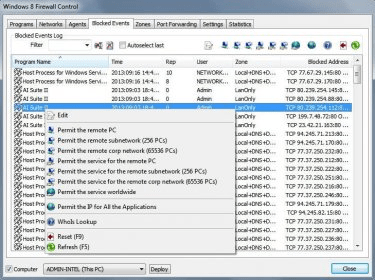

- PORT FORWARDING SYNCTHING WINDOWS 10 WINDOWS 10
- PORT FORWARDING SYNCTHING WINDOWS 10 ANDROID
- PORT FORWARDING SYNCTHING WINDOWS 10 PASSWORD
- PORT FORWARDING SYNCTHING WINDOWS 10 PLUS
I’m not 100% sure why this is the case, because the router is perfectly capable of assigning DNS when the tunnel is created.


Goto Settings > Network & Internet > VPN.Īnd then the Show advanced options checkbox.Īfter a few seconds, it should connect and you’re good to go!Īndroid can be configured so all network traffic must go across a VPN.
PORT FORWARDING SYNCTHING WINDOWS 10 ANDROID
My phone is running Android 8.1 via Lineage OS 15.1 your device may be different. These settings work for my Windows and Android clients make sure you test in your environment. However, not all clients (I’m looking at you Windows 10) support SHA256, so the profile hash algorithm remains SHA1 (the default). I’ve just enabled a few more modern encryption options (SHA256 and AES256). Here’s what I have ended up with, for reference: My recommendation is to very carefully note the exact dynamic configuration, and use the Copy function to make changes. Of course, I noticed that it hadn’t turned the encryption up to 11 and decided to muck with it.Įventually, after breaking everything, I swallowed by pride, deleted all IPSec config and let the L2TP re-add it correctly. Step 3 - Muck With the IPSec Config (optional not recommended)Īs mentioned above, if you’re on the most recent RouterOS firmware, IPSec will be configured correctly so it Just Works™. If you’re running an older version, look at the “ Other Guides“ section below for details.

This is a real help, because I’ve always found IPSec to be difficult to get right, and painful to troubleshoot when I get it wrong. Recent RouterOS versions will automatically configure IPSec for you at this point. Ipsec-secret=S3cre1Pa$$w0rd use-ipsec=required Set allow-fast-path=yes default-profile=l2tp-vpn enabled=yes\
PORT FORWARDING SYNCTHING WINDOWS 10 PASSWORD
The important thing is to set Use IPSec to required, and to enter an approprate IPSec secret (you may like to generate one from, or use your password manager). Go to PPP and click L2TP, and tick Enabled. Not sure if the problem is with the router, my configuration or the devices.
PORT FORWARDING SYNCTHING WINDOWS 10 WINDOWS 10
The password you assign at this point isn’t that important, as IPSec will protect it.Īlthough I have assigned an IPv6 prefix, neither my Android phone nor Windows 10 laptop made use of it. If you want a dynamic address, use an IPv4 pool name instead of an IP adderss.Īdd local-address=192.168.2.1 name=muj-phone password=ThePassword profile=\ I assign a static IP addresses at this point as well, because I only have a small number of devices. You’ll need to select your profile, and enter a password. Now go to the PPP > Secrets tab, and Add a new secret. Go to PPP > Profiles, and Add a new profile.Īll I add here are internal DNS servers, because I want to take advantage of my Pi-Hole.Īdd dns-server=192.168.1.19,192.168.130.31 name=l2tp-vpn Profiles let you define behaviour for many connections, and then you can override some settings at the individual login level ( secret). We need to add a profile and then a secret. It doesn’t provide encryption on its own, but is usually combined with IPSec for security. L2TP allows you to tunnel between two endpoints.
PORT FORWARDING SYNCTHING WINDOWS 10 PLUS
I’ve allowed traffic on UDP ports 500, 17, plus two IP protocols relating to IPSec: ipsec-esp (50) and ipsec-ah (51).Īdd action=accept chain=input comment="Allow L2PT / IPSec VPN access" \ĭst-port=500,1701,4500 in-interface-list=WAN protocol=udpĪdd action=accept chain=input in-interface-list=WAN protocol=ipsec-espĪdd action=accept chain=input in-interface-list=WAN protocol=ipsec-ah Step 1 - Firewall Rulesīefore we configure anything related to VPNs, we need to make sure we allow the right packets through the firewall. Router Stepsįirst, we need to configure the router. No additional VPN apps should be required on Windows or Android out of the box providers only. GoalĬonfigure a Mikrotik router to allow L2TP VPN access for Windows and Android devices. It’s also useful to have remote access to devices, in case something goes wrong or I need data that’s not in the cloud.Īnd, with the right DNS settings, means I can get the benefit of Pi-Hole blocking even when I’m on the road. Mostly, because my ADSL connection would would make it prohibitively slow.īut with a shiny new NBN HFC connection, I have bandwidth to burn! I haven’t needed VPN access to my home network in the past.


 0 kommentar(er)
0 kommentar(er)
